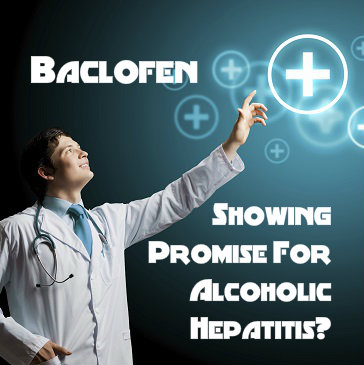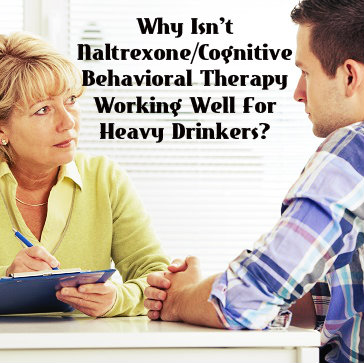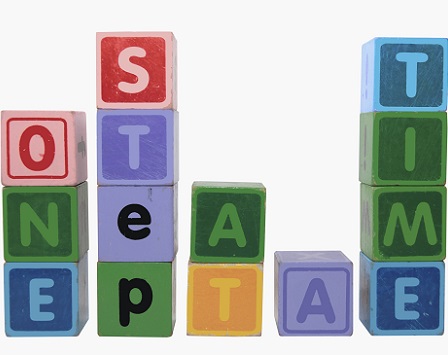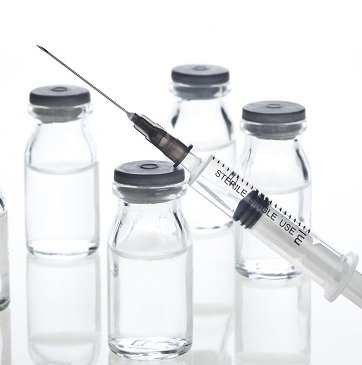Alcoholic hepatitis is a serious and potentially deadly liver ailment triggered by prolonged, excessive alcohol intake. It constitutes one form of a larger condition called alcohol-related liver disease. In a study published in May/June 2014 in the journal Alcohol and Alcoholism, researchers from two U.S. universities explored the potential usefulness of a medication called baclofen in easing the effects of alcoholic hepatitis in people affected by alcoholism. This medication, originally developed to treat certain types of muscle spasms, has already been shown to help people receiving treatment for alcoholism reduce the intensity of their cravings.
Alcoholic Hepatitis
 Hepatitis is the generic medical term for any disease mechanism that results in inflammation inside the liver, the body’s primary organ for doing such things as processing toxins and regulating cholesterol levels. Whenever you drink alcohol, a substance essentially poisonous to humans, your liver must process it and break it down so you can avoid any harmful effects.
Hepatitis is the generic medical term for any disease mechanism that results in inflammation inside the liver, the body’s primary organ for doing such things as processing toxins and regulating cholesterol levels. Whenever you drink alcohol, a substance essentially poisonous to humans, your liver must process it and break it down so you can avoid any harmful effects.
Unfortunately, the liver breaks down alcohol relatively slowly and you can easily overwhelm its capacity for detoxification. A person who regularly consumes excessive amounts of alcohol is at risk for one or more progressively damaging changes in his or her liver function.
The first of these changes, called alcoholic fatty liver disease, occurs when the liver starts to produce an abnormally large amount of fat inside its individual cells. Alcoholic hepatitis sets in after alcoholic fatty liver disease and produces symptoms such as jaundice, declining appetite, pain in the abdominal region, nausea and vomiting. The third stage of damaging change, called alcoholic cirrhosis, involves a permanent, disruptive buildup of scar tissue inside the liver.
As many as one-third of all people who habitually consume excessive amounts of alcohol will develop alcoholic hepatitis, the American Liver Foundation reports. The inflammation associated with the condition can have a negative impact on liver function that ranges from mild to severe. People with relatively mild forms of alcoholic hepatitis can recover their liver function if they stop drinking. However, people with relatively severe forms of the condition can experience rapid declines in liver health that lead to a cessation of function (i.e., liver failure). In turn, a person with liver failure can easily die.
Baclofen
Doctors traditionally prescribe baclofen for people experiencing muscle spasms stemming from either certain diseases that damage the spinal cord or the degenerative autoimmune disorder multiple sclerosis. The medication achieves its therapeutic effects in this context by slowing down the spinal cord’s rate of nerve cell interaction. Over the last few years, doctors have started using baclofen as an off-label treatment for the drinking cravings that typically arise during alcoholism recovery. If left unaddressed, these cravings can easily derail an attempt at establishing or maintaining sobriety. In 2012, researchers from France and Italy published the results of a study that confirmed the usefulness of baclofen in reducing the intensity of alcohol cravings.
Baclofen’s Usefulness In Alcoholic Hepatitis Treatment
In the study published in Alcohol and Alcoholism, researchers from Loma Linda University and UCLA used a small-scale investigation of 40 people to test baclofen as a treatment for alcoholic hepatitis. All of the study participants were affected by alcoholism; some of them had both alcoholic hepatitis and alcoholic cirrhosis, while others only had alcoholic hepatitis. Thirty-five of the 40 participants received baclofen at some point during a one-year time period; the average length of use for the medication was just under six months. The researchers gauged the effectiveness of baclofen by comparing the results of seven key tests for alcoholic hepatitis before and after treatment with the medication.
Thirty-four out the 35 baclofen recipients maintained their sobriety throughout the period under consideration. Critically, the researchers concluded that these individuals also experienced a significant reduction in the severity of their alcoholic hepatitis as measured through six out of the seven screening tests. In addition, they concluded that use of baclofen did not produce any substantial side effects.
The study’s authors believe their findings underscore both the usefulness and the safety of baclofen as a treatment for alcoholic hepatitis. However, the size of the study was quite small. As a result, the authors urge further work in this area in order to confirm their results and determine the specific doses of the medication that have the maximum benefits for people with alcoholism-related liver inflammation.
Find Out If Baclofen Can Help Treat Cocaine Addiction
07 Aug 2014
The Place For Alternative Medicine In Addiction
Alternative medicine is gaining popularity as people begin to turn to natural practices in medicine, many of which have been used for centuries in cultures around the world. Some prefer to use alternative medicine, while others turn to practitioners when modern medicine has failed. Today, alternative medicine touches all areas of healing, including addiction. Many rehab facilities are beginning to incorporate some of these techniques.
What Is Alternative Medicine?
Among the different terms referring to alternative medicine, a few stand out. Alternative refers to any practice outside mainstream, modern, Western medicine. Some prefer the term holistic medicine, which means treating the whole person instead of treating a disease or a set of symptoms alone. Holistic approaches use many alternative practices. Complementary medicine is another term commonly used. These are alternative medicine practices that are used in conjunction with traditional treatments.
What Kinds Of Alternative Therapies Are Used For Addiction Treatment?
 Alternative medicine encompasses a variety of practices from ancient Chinese herbal remedies to modern biofeedback equipment. A few of these have found a place in addiction rehab and have helped some people in their battle to give up drugs or alcohol. Acupuncture, which comes from traditional Chinese medicine, is a practice that involves inserting thin needles into the skin. Acupuncture is believed by some to help reduce cravings and the urge to relapse.
Alternative medicine encompasses a variety of practices from ancient Chinese herbal remedies to modern biofeedback equipment. A few of these have found a place in addiction rehab and have helped some people in their battle to give up drugs or alcohol. Acupuncture, which comes from traditional Chinese medicine, is a practice that involves inserting thin needles into the skin. Acupuncture is believed by some to help reduce cravings and the urge to relapse.
Meditation and yoga are also often used as components of addiction treatment. Both come from ancient India and are great for relaxation and stress relief. Yoga is a type of exercise that involves using controlled movements. Research has proven that yoga helps people manage stress. When you can reduce stress in your life you can better resist the urge to abuse substances. Meditation has a similar effect; it helps focus the mind and control will. Turning to meditation when craving occurs can be a very powerful and effective tool.
Other types of alternative medicine may be used during addiction treatment, although research as to their effectiveness is limited. Some of these include art therapy, equine therapy (working with horses), massage therapy, herbal supplements, prayer or spiritual enrichment and hypnosis. Some rehab facilities may also use biofeedback and neurofeedback. These are techniques that use equipment to measure body and brain processes so that you can learn to control them. In neurofeedback, brain waves are retrained to a normal pattern to help reduce cravings.
Should I Use Alternative Medicine To Help Treat Addiction?
Whether alternative medicine practices can help you overcome addiction is uncertain. There is evidence for some of the more common practices like yoga and meditation, but others have received limited attention from researchers. For the most part, these practices are safe and it can’t hurt to try them. If they work for you and help you to stay sober and resist cravings, use them.
Only choose to participate in alternative medical care from experienced practitioners. If certain techniques are of interest, speak to your therapist, clinical team or doctor to get resources for practitioners who have worked with addicts. Most techniques are safe, but in the wrong hands there could be consequences or side effects. Also remember that alternative medicine should be used only in addition to primary addiction treatment. It is also necessary to keep up with therapy or support group sessions. The combination of traditional and alternative medicine, however, may prove to be just the right plan that works for you.
Read Our Other Posts On Addiction Recovery!
Opioid maintenance treatment is a form of addiction treatment that uses opioid-based medications as safer substitutes for heroin or other powerful opioid substances of abuse. The two medications typically used in this kind of treatment are methadone and buprenorphine. In a study published in March 2014 in the journal Addiction, a multinational German and Swiss research team explored the potential usefulness of an opioid medication called slow-release oral morphine as an alternative to methadone in opioid maintenance treatment. These researchers concluded that slow-release oral morphine appears to be at least as effective as methadone in treating people with opioid use disorder.
Opioid Use Disorder And Medications
 People affected by opioid abuse or opioid addiction can receive a diagnosis for a condition officially known as opioid use disorder. Some addiction programs use opioid-based medications as temporary treatments for this disorder in order to help their patients/clients avoid the immediate pitfalls of opioid withdrawal. Others use opioid-based medications as longer-term alternatives for people affected by opioid use disorder.
People affected by opioid abuse or opioid addiction can receive a diagnosis for a condition officially known as opioid use disorder. Some addiction programs use opioid-based medications as temporary treatments for this disorder in order to help their patients/clients avoid the immediate pitfalls of opioid withdrawal. Others use opioid-based medications as longer-term alternatives for people affected by opioid use disorder.
Both methadone and buprenorphine produce their drug effects inside the brain more slowly than heroin and other commonly abused opioid substances. In addition, they have a lower maximum effect than the typical abused opioid. During opioid maintenance treatment, doctors rely on these characteristics to introduce either methadone or buprenorphine as an alternative to the unrestrained drug intake associated with unaddressed opioid addiction.
When used in this context, both medications allow addicted users to gain control over their drug intake while simultaneously evading the onset of severe opioid withdrawal. Methadone has a stronger opioid effect than buprenorphine and comes in the form of tablets or oral solutions. Buprenorphine is often combined with a second non-opioid medication called naloxone (which helps reduce any risks for buprenorphine abuse) and comes in the form of a tablet or strip placed under the tongue.
Slow-Release Oral Morphine
Morphine is one of the primary mind-altering substances found naturally in a plant called the opium poppy, which acts directly or indirectly as the originating source of all opioid drugs and medications. Pharmaceutical companies throughout the world manufacture purified forms of this substance as treatments for certain forms of mild and severe pain, including surgical pain and the pain associated with various forms of cancer.
Some forms of morphine pass rapidly to the brain after entering the bloodstream and have a relatively short-term impact on the ability to experience pain. Other forms are designed to pass into the brain slowly over an extended period of time and provide longer-term pain relief. Slow-release oral morphine, also known as extended-release morphine, is a specific type of long-acting morphine commonly prescribed for the treatment of significant pain that doctors expect to continue for prolonged amounts of time.
Slow-Release Oral Morphine’s Usefulness In Opioid Maintenance Treatment
In the study published in Addiction, researchers from six German institutions and one Swiss institution used a project involving 157 German and Swiss adults affected by opioid dependence/addiction to examine the usefulness of slow-release oral morphine in opioid maintenance treatment.
All of these individuals previously received methadone as part of their treatment; for a total of 22 weeks, some of the participants received slow-release oral morphine instead of methadone. The researchers monitored each individual’s continuing involvement in heroin use with two weekly urine drug tests and compared the results of the tests gathered from the methadone users to the results of the tests gathered from the slow-release morphine users.
After completing their comparisons, the researchers found that the slow-release morphine users were slightly more likely to test positive for heroin use during treatment than the methadone users. However, the difference between the two groups was minor and insignificant. The methadone users also had somewhat higher chances of remaining active participants in opioid maintenance treatment than the slow-release morphine users. However, the researchers again characterized the differences between the two groups as negligible. In addition, the group using slow-release morphine did not experience serious opioid-related harm during treatment any more often than the group using methadone.
Benefits Of Easier-Access Morphine For Opioid Maintenance Treatment
The authors of the study published in Addiction concluded that slow-release morphine is apparently just as useful in opioid maintenance treatment as methadone. This is important, in part, because federal guidelines restrict the places in which recovering addicts can receive methadone-based treatment. The authors note that the usefulness of slow-release morphine depends upon the amount of the medication used during opioid maintenance. As a rule, the number of heroin-positive urine tests drops as the amount of slow-release morphine given to a patient/client increases.
If You Or A Loved One Is Struggling With An Addiction…Don’t Give Up, Help Is Waiting – Call Us Now
22 Jul 2014
Why Do Heavy Drinkers Have A Lower Adherence To Naltrexone/Cognitive Behavioral Therapy?
Treatment programs for people affected by alcoholism commonly feature medications, some form of counseling or psychotherapy, or a combination of medication and counseling or psychotherapy. Together, a medication called naltrexone and a form of therapy called cognitive behavioral therapy have been shown to produce beneficial results in controlled testing. In a study published in March 2014 in The American Journal of Drug and Alcohol Abuse, researchers from two Finnish institutions sought to determine if the naltrexone/cognitive behavioral therapy combination works as well in a less controlled setting that mimics a typical treatment environment.
What Is Naltrexone And How Does It Work?
 Naltrexone is a medication that blocks access to sites, called opioid receptors, located on nerves in both the brain and certain parts of the body. When used in a person addicted to opioid substances of abuse, this blocking action prevents the characteristic “high” associated with narcotics. For reasons that researchers and doctors don’t fully understand, the same blocking action helps reduce the amount of pleasure derived from alcohol consumption, in addition to decreasing the intensity of any urges to drink more alcohol.
Naltrexone is a medication that blocks access to sites, called opioid receptors, located on nerves in both the brain and certain parts of the body. When used in a person addicted to opioid substances of abuse, this blocking action prevents the characteristic “high” associated with narcotics. For reasons that researchers and doctors don’t fully understand, the same blocking action helps reduce the amount of pleasure derived from alcohol consumption, in addition to decreasing the intensity of any urges to drink more alcohol.
Together, these effects can help a person in recovery from alcoholism avoid relapsing back into a pattern of active drinking. As a rule, doctors give the medication only to recovering alcoholics who have entirely or largely halted their alcohol intake; doctors also typically use naltrexone as part of an overall treatment approach rather than as a sole component in treatment. The medication comes in forms that include tablets and an extended-release injection.
Cognitive Behavioral Therapy
Cognitive behavioral therapy is the umbrella term for a group of therapeutic approaches that focus on helping patients/clients identify and change thoughts and beliefs that can contribute to a range of harmful behaviors, including the abuse of alcohol and/or drugs.
Specific approaches that fall under this umbrella include rational behavior therapy, dialectic behavior therapy and rational emotive behavior therapy. Cognitive behavioral therapy takes place in a limited timespan that usually lasts for about four months. Unlike some forms of psychotherapy that maintain a strict hierarchy between the therapist and patient/client, it features a shared process that calls on the patient/client to take an active role in achieving his or her treatment objectives. The objectives for any given individual are specific to his or her particular situation and self-perceived needs and wants.
Does The Combination Of Naltrexone And Cognitive Behavioral Therapy Work For Alcoholism?
In the study published in The American Journal of Drug and Alcohol Abuse, researchers from Finland’s University of Helsinki and National Institute for Health and Welfare assessed the usefulness of the naltrexone/cognitive behavioral therapy combination as a treatment for alcoholism in a real-world environment. They chose this line of inquiry, in part, because of the relative lack of information on the combination in people actively receiving treatment outside of a controlled, experimental setting. During the study, the researchers gathered data from 315 outpatients receiving both naltrexone and cognitive behavioral therapy for a 20-week period. Measurements of treatment success included relative levels of alcohol intake and relative levels of alcohol craving among the participants.
After completing their analysis of the treatment outcomes, the researchers concluded that the naltrexone/cognitive behavioral therapy combination does not work equally well for all people recovering from alcoholism. Those individuals most likely to benefit from naltrexone and cognitive behavioral therapy were people who consumed relatively small amounts of alcohol before entering treatment. Conversely, the individuals least likely to benefit from the combination drank relatively heavily before entering recovery, had never been in a recovery program before and had a fixed pattern of alcohol consumption before entering treatment.
When Naltrexone And Cognitive Behavioral Therapy Works Best
The authors of the study published in The American Journal of Drug and Alcohol Abuse note that, strictly speaking, the combination of naltrexone and cognitive behavioral therapy did not fail to produce good results.
Instead, those individuals who fared poorly often did not take their prescribed doses of the medication, especially when they continued to engage in significant amounts of drinking while taking part in treatment. The authors believe that the fairly low rate of compliance with naltrexone use may pose a serious concern for the real-world treatment of alcoholism, especially among severely affected alcoholics.
Consequently, they also believe that alcohol programs may need to use a more comprehensive set of treatment options in order to help heavily affected alcoholics improve while in recovery. On a related note, doctors can use the extended-release, injectable form of naltrexone (Vivitrol) to overcome some of the problems with medication compliance.
Read Our Other Alcoholism Treatment Posts
Medication commonly plays an important role in the effective treatment of alcoholism (one of the two overlapping conditions that constitute alcohol use disorder). Some of the medication options in use were specifically designed to help people affected by problematic alcohol use, while others were originally designed for the treatment of non-alcohol-related health concerns.
In a study published in April 2014 in The American Journal of Drug and Alcohol Abuse, researchers from the Boston University School of Medicine explored the potential usefulness of an anti-seizure medication called ezogabine or retigabine as a treatment for people diagnosed with alcoholism.
Medications For Alcoholism Treatment
 Doctors have four main medication options for helping people affected by alcoholism. Two of these options, disulfiram (Antabuse) and acamprosate (Campral), were developed primarily for alcohol-related treatment. Pharmaceutical researchers initially developed the third option, naltrexone (ReVia, Vivitrol), as a treatment for people diagnosed with opioid addiction. The fourth option, topiramate (Topamax), was originally intended to help individuals affected by certain types of seizure disorders.
Doctors have four main medication options for helping people affected by alcoholism. Two of these options, disulfiram (Antabuse) and acamprosate (Campral), were developed primarily for alcohol-related treatment. Pharmaceutical researchers initially developed the third option, naltrexone (ReVia, Vivitrol), as a treatment for people diagnosed with opioid addiction. The fourth option, topiramate (Topamax), was originally intended to help individuals affected by certain types of seizure disorders.
The U.S. Food and Drug Administration has officially approved disulfiram, acamprosate and naltrexone as alcoholism treatments. The FDA has not approved topiramate for alcoholism treatment; however, doctors can still prescribe this medication as an unofficial or “off-label” option.
Unique Results
Each of the current medication options for alcoholism produces results in its own distinct way. For example, disulfiram deters drinking by slowing down the body’s ability to process alcohol and sharply exaggerating the unpleasant symptoms associated with excessive alcohol consumption. Acamprosate helps ease some of the worst symptoms of alcohol withdrawal by making certain changes in the brain’s chemical balance.
Naltrexone helps block the nerve receptors that normally give opioid narcotic substances access to the brain; for reasons that are not entirely clear, this action also interferes with the pleasure derived from alcohol consumption and reduces the strength of cravings for more alcohol intake. Topiramate helps reduce any overactivity in the brain’s nerve cells; although no one really knows why, this reduction also diminishes the strength of alcohol cravings and helps lower the risks for participation in excessive drinking.
Outside of the U.S., ezogabine is also commonly known as retigabine. Its brand name within the U.S. is Protiga. Like topiramate, ezogabine belongs to a group of medications called anti-seizure medications or anticonvulsants. Doctors typically use the medication as part of a larger course of treatment for adults affected by seizures called partial onset seizures, which remain localized in one part of the brain rather than branching out and producing more widespread effects. Ezogabine comes in tablet form.
Ezogabine In Alcoholism Treatment
In the study published in The American Journal of Drug and Alcohol Abuse, the researchers from the Boston University School of Medicine used laboratory experiments on rats to investigate the usefulness of ezogabine (retigabine) as a treatment for alcoholism. These researchers had previously explored the potential usefulness of other types of anti-seizure medications and chose to focus on ezogabine because the medication works in a fairly unique way inside the brain.
During the study, the researchers gave ezogabine to two groups of rats for three days. One of these groups had access to a 10 percent solution of pure drinking alcohol, while the other group had access to a 5 percent alcohol solution. A comparison group of rats received a placebo instead of ezogabine. After comparing the outcomes in the three groups, the researchers concluded that the rats given ezogabine significantly reduced their alcohol intake over the course of the study.
The authors note that the therapeutic dose of ezogabine given to the rats in the project was quite close to the dose capable of producing an unwanted loss of muscle control. This means that, in human beings, the amount of the medication needed to help recovering alcoholics curb their drinking may not differ much from the amount capable of causing harm. Citing this finding, the study’s authors call for more research to investigate the specific effects that ezogabine has inside the central nervous system (brain and spinal cord). In addition, they feel that their ezogabine-related work can play an important role in the search for other medications that work in a similar way and may ultimately provide unique benefits in alcoholism treatment.
Call Us Now For Alcohol Abuse Help! We Are Here For You 24/7!
Deciding to admit to your problem with addiction is a big accomplishment. Denial and fear are major roadblocks that keep so many addicts from ever coming clean. Once you have made the admission and decided to get help, though, you still have many steps to go until you reach sobriety and recovery. The first step is detoxification, or detox. What happens during detox may be uncomfortable and painful, but it will bring you through to the other side and set you on the path to your personal recovery journey.
What Do You Do In Drug Rehab?
 Drug rehab is how you move from the world of addiction to a life of sobriety. It is a transition period that will help to transform you. The first part of rehab is detox, although some facilities require that you detox before you even get there. In this case, you can find a location that specializes in detoxing before you enter your long-term rehab facility.
Drug rehab is how you move from the world of addiction to a life of sobriety. It is a transition period that will help to transform you. The first part of rehab is detox, although some facilities require that you detox before you even get there. In this case, you can find a location that specializes in detoxing before you enter your long-term rehab facility.
Once you have completed a detox, you will go through a series of counseling sessions and other activities designed to help you learn more about yourself and your addiction. One-on-one therapy sessions are personal and will help you get to the root of your problem. Group work will help you empathize with others and learn from their experiences. Other activities help you to relax without using drugs or alcohol and teach you strategies for staying sober.
What Happens During Detox?
Your first step in the process of recovery is detox. What happens during this step is that your body is cleared of all substances so that you are completely sober and ready for the rest of your journey. During this process you will experience the symptoms of withdrawal: irritability, restlessness, anxiety, insomnia, nausea, headaches, vomiting, diarrhea and more. It is unpleasant, painful and difficult, but it is necessary.
Are There Different Kinds Of Detox?
Different facilities may offer different ways of detoxing. Many will simply do it the natural way: allowing your body to eliminate the drug or alcohol over a period of several days without much intervention. Some facilities may offer medicated detox, which involves giving you medications to relieve some of your withdrawal symptoms. Others may offer rapid detox. This means putting you under anesthesia for a couple of days so that you essentially sleep through your detox. This is a controversial method, but one many people find attractive.
Any successful drug rehab includes a period of detox. You cannot begin to enter recovery until you have stopped abusing substances and let the drugs and alcohol pass completely from your body. With the right professionals on your team, you can get through it and come out on the other side ready for rehab.
Read More About The Origins And Developments In Detox Addiction Treatment
Methadone maintenance treatment and abstinence-based treatment are two approaches used in recovery programs for people affected by opioid addiction. When successful, each of these treatment options helps opioid addicts reduce their level of craving for continued drug/medication use.
In a study published March/April 2014 in the Journal of Addiction Medicine, a multinational team of researchers compared the brain effects of successful methadone maintenance treatment to the brain effects of successful abstinence-based treatment. These researchers concluded that each of the two approaches to opioid addiction treatment has its own unique impact on brain function.
 Harm Reduction
Harm Reduction
Methadone maintenance treatment is one form of a harm reduction-based approach to substance addiction. In harm reduction, doctors don’t set complete abstinence from substance intake as a necessary goal of treatment.
Instead, they attempt to limit the damage caused by uncontrolled substance use, even if this means that their patients still engage in substance use to a lesser degree or in more strictly limited circumstances.
An opioid addict participating in methadone maintenance receives a specific amount of methadone (an opioid medication) every day instead of consuming an unknown or unpredictable amount of heroin or some other powerful opioid drug of abuse. This dose of methadone provides enough of an opioid effect to avoid triggering symptoms of withdrawal i
Abstinence-Based Treatment For Opioid Addiction
An abstinence-based approach to opioid addiction treatment may also involve the use of methadone or another opioid medication called buprenorphine as a temporary treatment to help recovering addicts avoid the worst symptoms of opioid withdrawal.
However, the ultimate aim of this approach is to help recovering addicts completely avoid opioid use on an ongoing basis. This means that the use of opioid medications is strictly limited, if it occurs at all. Abstinence-based programs may also use non-opioid-based medications such as naloxone or naltrexone, which actively block the drug effects of opioid substances in patients/clients who have completely detoxified from active opioid use.
Counseling And Psychotherapy Treatment Sessions
Both methadone maintenance and abstinence-based programs also typically use some form of counseling, psychotherapy or mutual support to augment the effects of medication and improve the odds that treatment will have a beneficial outcome.
Forms of counseling and psychotherapy used in opioid addiction treatment include a behavioral retraining approach called cognitive behavioral therapy and a modern-day form of psychoanalysis called psychodynamic therapy. Many mutual support groups for recovering opioid addicts follow a basic 12-step approach that emphasizes ongoing drug abstinence.
Differing Brain Effects For Methadone vs. Abstinence-Based Treatment
In the study published in the Journal of Addiction Medicine, researchers from Australia and Iran used an imaging technology called fMRI (functional magnetic resonance imaging) to compare the brain functions of a group of people who successfully participated in methadone maintenance treatment for heroin addiction to the brain functions of a group of people who successfully participated in abstinence-based treatment for heroin addiction.
For comparison’s sake, they also examined the brain functions of a third group of people unaffected by opioid addiction. The fMRI scans were taken while the members of all three groups viewed a mixture of stimulating cues, including cues designed to trigger any residual cravings for heroin. In addition to analyzing the data from these scans, the researchers asked each individual to report his or her level of drug craving prior to and after exposure to the heroin-related cues.
The researchers found that the members of the methadone maintenance group and the members of the abstinence-based treatment group displayed an equal ability to resist the heroin cues used during the fMRI scans. However, they concluded that different brain areas were activated in each group as a result of exposure to the cues.
Compared to people unaffected by opioid addiction, the people who participated in methadone maintenance showed an unusually high level of activity in parts of the brain responsible for visual processing, logical analysis, the control of both pleasure- and fear-based emotional responses, and basic muscle coordination.
On the other hand, the people who participated in abstinence-based treatment showed an unusually high level of activity in parts of the brain responsible for regulating decision-making, controlling impulsive behavior, anticipating rewards and controlling certain key involuntary functions in the cardiovascular (heart and blood vessel) system.
The authors of the study published in the Journal of Addiction Medicine note that, when successful, both methadone maintenance treatment and abstinence-based treatment are linked to increased activity in brain areas that help recovering opioid addicts significantly reduce their drug cravings. They also note the clearly differing brain pathways that are typically activated in participants in each type of treatment.
Discover Additional Treatments For Opioid Addiction Help Is Available – Call Now!
Naltrexone is a medication that directly counteracts the intoxicating effects of legal and illegal opioid narcotic substances. Doctors sometimes use the medication to treat people recovering from opioid addiction, but the success of this treatment depends largely on each individual taking his or her naltrexone dose on a regular basis.
In a study published in March/April 2014 in the American Journal on Addictions, a team of Chinese researchers explored the safety of a long-lasting, injectable form of naltrexone that could eliminate some of the concerns about maintaining regular dosing of the medication.
Naltrexone For Opioid Addiction Treatment
 Scientists classify naltrexone with a group of substances known as opioid antagonists. When they enter the bloodstream, all of these substances travel to the sites that normally give opioid drugs and medications access to the brain. Once they reach these sites, opioid antagonists physically block opioids and prevent them from producing their narcotic effects.
Scientists classify naltrexone with a group of substances known as opioid antagonists. When they enter the bloodstream, all of these substances travel to the sites that normally give opioid drugs and medications access to the brain. Once they reach these sites, opioid antagonists physically block opioids and prevent them from producing their narcotic effects.
Naltrexone, in particular, can play a role in opioid addiction treatment because it blocks the effects of opioid substances, lowers the level of opioid craving in recovering addicts and helps diminish the chances that recovering opioid addicts will relapse.
Unlike two opioid-based medications—called methadone and buprenorphine—commonly used in opioid addiction treatment, naltrexone is not a controlled substance. This means that doctors and other qualified health professionals require no special licensing to prescribe it. Many health professionals prescribe an oral form of the medication that patients must take every day.
Injectable Naltrexone
Extended-release, injectable naltrexone is also known as depot naltrexone. Doctors or other qualified professionals administer this medication directly into muscle tissue (typically the gluteus muscles). Instead of dissipating in the bloodstream relatively rapidly like oral naltrexone, extended-release, injectable naltrexone gradually enters the bloodstream for roughly one month and blocks access to the effects of opioid drugs and medications throughout that time.
The main potential benefit of this form of naltrexone is improved compliance with the abstinence goals established in opioid addiction recovery programs. Like the short-acting oral version of the medication, depot naltrexone can trigger severe withdrawal symptoms if given to a recovering addict who still has opioids in his or her system.
For this reason, standard treatment guidelines stipulate that doctors wait at least a week after the verified end of opioid intake to administer the medication. The U.S. Food and Drug Administration approved the sale of an extended-release, injectable naltrexone product called Vivitrol in 2010.
Safety Of Injectable Naltrexone
In the study published in the American Journal on Addictions, researchers from three Chinese institutions used a small-scale trial to assess the safety of injectable depot naltrexone and examine patients’ ability to tolerate the medication.
All told, this trial included 36 people. Twenty-four of these individuals participated in a separate panel. Six people in this panel received a relatively high 400 mg dose of injectable naltrexone, while another six received a relatively low 200 mg dose of the medication. Twelve people in the panel received placebo injections that mimicked either the 400 mg naltrexone dose or the 200 mg naltrexone dose. The remaining 12 study participants were enrolled in a second panel and randomly received either six monthly 400 mg naltrexone injections or placebo injections that mimicked the naltrexone injections.
The researchers found that both the recipients of the 200 mg injections and the 400 mg injections still had medically significant amounts of naltrexone in their bloodstreams one month after dosing. Eleven of the people who received injectable naltrexone had some sort of adverse reaction while using the medication.
The researchers concluded that seven of these reactions were potentially the result of naltrexone exposure; however, they also concluded that none of the observed reactions produced moderate or severe effects.
Overdose Risks?
The authors of the study published in the American Journal on Addictions found that extended-release naltrexone injections deliver steady amounts of the medication for a minimum of one month. They also found that the medication does not accumulate dangerously after multiple monthly injections occur.
Overall, they concluded that extended-release, injectable naltrexone is tolerated well by patients and does not pose any undue safety risks.
On a related note, the federal Substance Abuse and Mental Health Services Administration points out that fatal or non-fatal opioid overdoses sometimes occur in people who receive monthly naltrexone injections but still continue taking opioid substances; however, the same overdose risks also apply to users of oral naltrexone or opioid-based treatment options.
If You Or Someone You Love Is Struggling With Addiction, Call Us Now! Help Is Waiting.
See Why Naltrexone Helps Reduce Amphetamine Use Could This Be An Effective Treatment For Your Addiction?


